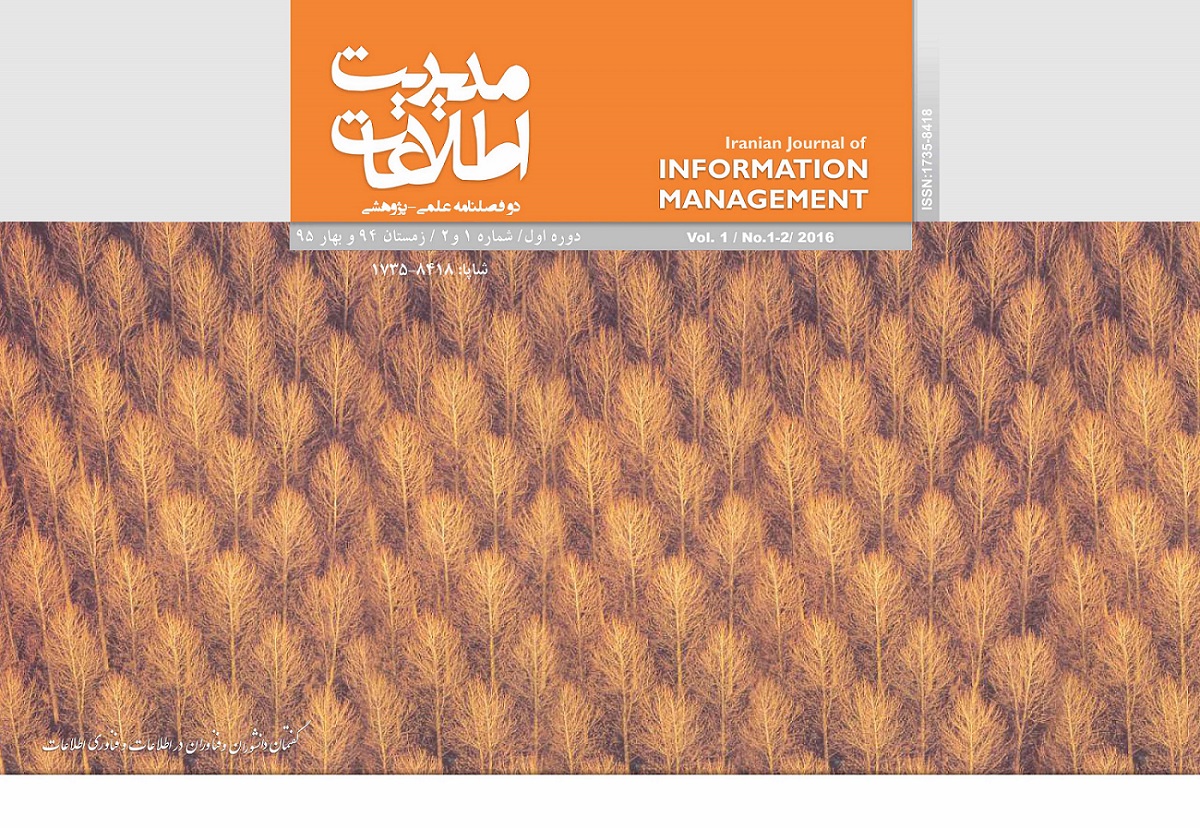نگاشت نقشه راه فناوری اطلاعات: رویکردی برای همراستایی راهبردهای فناوری اطلاعات با راهبردهای کسبوکار
نوع مقاله : مقاله پژوهشی
نویسندگان
1 استادیار پژوهشگاه علوم و فناوری اطلاعات ایران
2 کارشناس ارشد مهندسی صنایع، دانشگاه صنعتی امیرکبیر
چکیده
بکارگیری موثر فناوری اطلاعات یکی از عوامل موفقیت سازمانها در کسب مزیت رقابتی و خدمترسانی بهتر به مشتریان محسوب میشود. رشد فزاینده پیشرفتها و نوآوریها در این حوزه نیز چالشهایی را در زمینه همراستا نمودن راهبردهای فناوری اطلاعات با راهبردهای سازمان ایجاد کرده است. بهگونهای که همراستایی راهبردهای فناوری اطلاعات با راهبردهای کسب و کار همواره یکی از ده موضوع برتر بین مدیران این حوزه تلقی میشود. با وجود روشها و مدلهای متنوعی که در دهههای گذشته برای حل مسئله همراستایی پیشنهاد و بکارگرفته شده است، همچنان چالشهای جدی در این زمینه وجود دارد. نگاشت نقشهراه فناوری همواره به عنوان یکی از موثرترین رویکردها برای همراستا نمودن راهبردهای سازمان با برنامهریزی در حوزه فناوری محسوب میشود. لیکن تاکنون از این رویکرد برای حل مسئله «همراستایی راهبردهای فناوری اطلاعات با کسب و کار» استفاده نشده است. بنابراین در این پژوهش از طرفی با مرور ادبیات مسئله همراستایی و تحلیل آن، چالشهایی که با وجود ابزارها و مدل های موجود در این زمینه همچنان برطرف نشدهاند ، استخراج میشود. از طرف دیگر مفاهیم نظری و کاربردی نقشهراه فناوری نیز به صورت سیستماتیک تحلیل میشوند و در نهایت نگاشتی بین چالشها و مفاهیم حاصل میشود تا مشخص شود که تا چه میزان رویکرد نگاشت نقشهراه فناوری میتواند برای رفع چالشهای مسئله همراستایی مناسب باشد. در نهایت مفهوم رویکرد نگاشت نقشهراه فناوری اطلاعات با هدف همراستا نمودن اهداف و راهبردهای سازمان با پیشرفتهای نوین در حوزه فناوری اطلاعات بررسی میشود و یک نمونه اولیه از نقشهراه فناوری اطلاعات برای یک سازمان خدمتمحور ارائه میگردد.
کلیدواژهها
عنوان مقاله [English]
Information Technology roadmapping: an approach for aligning IT strategies with business strategies
نویسندگان [English]
- Azadeh Mohebi 1
- Amir Heydari 2
1 Iranian Research Institute for Information Science and Technology (IranDoc)
2 Master of Industrial Engineering, Amirkabir University of Technology
چکیده [English]
Applying information technology (IT) effectively, is one of the key factors for organizational success in gaining competitive advantages and delivering better services to customers. Incremental growth of IT innovations and solutions, however result in challenges in aligning IT strategies with business strategies (IT-alignment), and consequently applying IT effectively. Although various models and methods have been developed during recent decades to overcome such challenges, still IT-alignment is among the top ten issues for IT managers. Technology roadmapping (TRM) is an effective approach for aligning business strategies with technology planning and management. However, this approach has not been applied officially in the context of IT for solving IT-alignment problems. In this research, first we review and analyze issues and unsolved challenges in the area of IT alignment, based on recent surveys in this area. Second, we elaborate and analyze the concept of technology roadmapping by focusing on its theoretical and experimental aspects. Then, we depict a systematic mapping between different conceptual aspects of technology roadmapping as an approach, and the unresolved issues of IT-alignment, to evaluate how much TRM can be an effective approach for addressing IT-alignment issues. Finally, the concept of information technology roadmapping is elaborated and a prototype of this roadmap is developed for a service-oriented organization.
کلیدواژهها [English]
- IT-alignment
- technology road mapping
- systematic mapping
- information technology planning
دوره 1، شماره 1 - شماره پیاپی 1
زمستان 1394 و بهار 1395اسفند 1394صفحه 15-37
- تاریخ دریافت: 07 اسفند 1394
- تاریخ پذیرش: 07 اسفند 1394
 مدیریت اطلاعات
مدیریت اطلاعات
